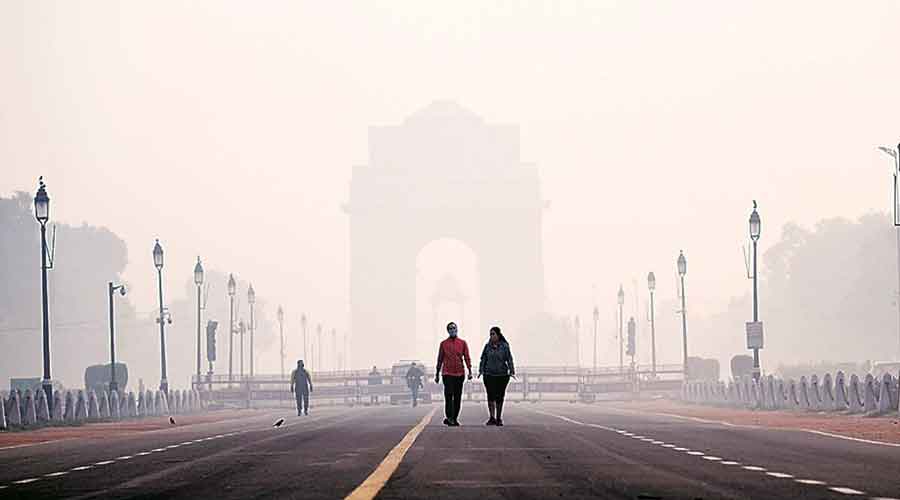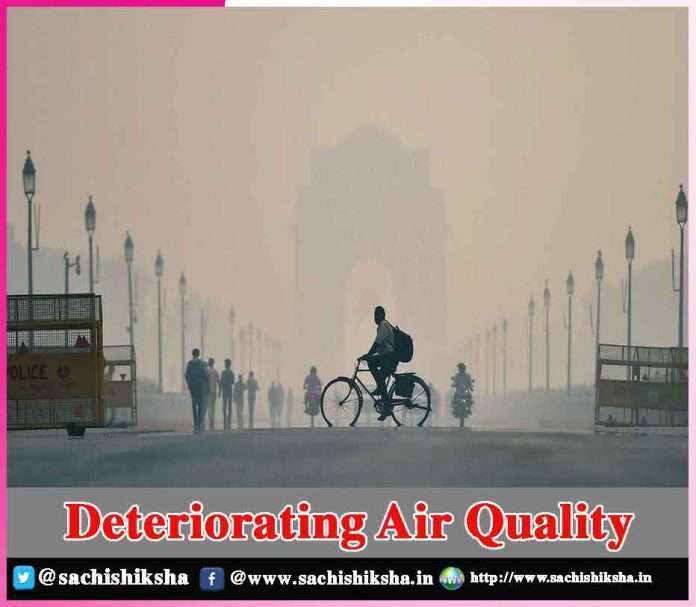Deteriorating Air Quality
Introduction: Every year, around these months which mark the beginning of winters we experience immense air pollution which obstructs our vision and also impacts our respiratory system negatively. This is because of deteriorating air quality.
Air pollution is a global concern. Harvest season of kharif crops produces stubble which is burnt massively. This is aggravated by the air pollution as a result of the festival of Diwali. Industrial emissions and vehicular emissions also add to it. The Air Quality Index reaches compromising levels during this time.
AQI of more than 400 is severe and very dangerous for humans. According to the WHO, every year air pollution is responsible for about seven million deaths around the globe. Nine out of ten human beings breathe air that exceeds the WHO’s guideline limits for pollutants. Those living in low- and middle-income countries suffer the most.
Also Read:
- Take good care of your Inverter, Air Conditioner and Geyser
- Need Of the Hour: An Integrated Framework
- How Do Vertical Gardens Help The Environment? Advantages of Vertical Farming
- Managing Different Ailments
Table of Contents
Air Pollution Worsens in Winter:

The pollutants inhaled like oxides of nitrogen, sulfur and carbon are very harmful. Carbon monoxide is very lethal and can cause death of a person. The reason is a lot of polluting activities increase during winter. Burning of biomass, burning stubble of the fields increases during winter.The increasing number of brick kilns, which operate mainly in winter, is another major reason why there is a high level of PM2.5 in winter. During winter, cool air stagnates and keeps pollution close to the surface. As a result, the persistent fog mixed with smoke from industries form smog and it only worsens in winter.
Indoor Polluted Air:
Deteriorating air quality also affects indoor air. Poor insulation of houses lead to pollutants entering inside the houses and exacerbating the danger. Nearly half of the urban population being monitored is exposed to air pollution that is at least 2.5 times higher than the levels WHO recommends. There are many components of air pollution, both gaseous and solid. But high concentrations of small and fine particulate matter is particularly associated with high numbers of deaths from heart disease and stroke, as well as respiratory illnesses and cancers.
Measurement of fine particulate matter of 2.5 micrometers or less in diameter (PM2.5) is considered to be the best indicator of the level of health risks as a result of air pollution. The Central Pollution Control Board (CPCB) of India is a statutory organization under the Ministry of Environment, Forests and Climate Change. It coordinates the activities of the State Pollution Control Boards by providing assistance and guidance and also resolves disputes among them. It sets standards and guidelines for industry specific emissions.
Panchamrita:
In order to address and combat air pollution individual cities can take local action to improve air quality and thus go against regional trends. And good air quality can go hand in hand with economic development. Ensuring a positive balance between development and environmental sustainability is very important so that the air around us remains clean and healthy. Afforestation is one of the most important steps that need to be taken to ensure clean air.
It is because trees purify air and keep the ambient air fresh and healthy to breathe. India’s pledge of the Panchamrita at the COP26 in Glasgow is a clear indication of its future ambitions and goals to keep the air clean and fresh and also commitment in strengthening its response towards climate change so as to limit it well below 2 degrees celsius while pursuing efforts to keep it below 1.5 degree celsius.
The 5 goals in the Panchamitra are as follows-
- India will get its non-fossil energy capacity to 500 gigawatt by 2030.
- India will meet 50 per cent of its energy requirements with renewable energy by 2030.
- Carbon emission to be reduced by one billion tonnes by 2030.
- Carbon intensity of its economy to be reduced by 45 percent by 2030.
- India will achieve net-zero by 2070.
Efforts to Reduce Atmospheric Warming:
All these aims set by India are a step towards a positive direction. Reducing dependence on coal in a phased manner is an important step towards decarbonizing the atmosphere. Increase in the carbon dioxide in the air has resulted in global warming and greenhouse effect. Other greenhouse gases like Methane and many aerosols trap heat and cause warming of the Earth’s surface.
Atmospheric warming is very much associated with climate change and has the potential to increase ground-level ozone in many regions, which may present challenges for compliance with the ozone standards in the future. Hence, air pollution and its consequences are not singular in nature. It is intricately linked to many other problems like global warming and climatic change which manifest further into many phenomena which are harmful and dangerous for the planet. Thus, depending on renewable energy is an important step to gradually eliminate dependence on fossil fuels and other nonrenewable sources that are likely to exhaust and cause an Energy Crisis one day.
Installing Renewable Energy:
Hence, it is now the time to invest in installing renewable energy and fostering research and development in these sources so that we are utilizing good sources well before we cannot depend further on fossils. Green hydrogen is one more step towards addressing air pollution.
Green hydrogen can drive India’s transition to clean energy, combat climate change. Blended diesel with ethanol is another breakthrough development to address this issue. Hence, we see that such developments ,research and inventions are very important and salient towards this journey of addressing climatic change and air pollution. PM- KUSUM, National Wind-Solar Hybrid Policy, Rooftop Solar Scheme are some other steps in the positive direction.
Introduction:
Good air quality pertains to the degree to which the air is clean, clear and free from pollutants such as smoke, dust and smog. A fine air quality is a requirement for preserving the balance of life on earth for humans, plants, animals and natural resources. It is for us to ensure that we take positive steps to make India’s goals in Glasgow successful. Good and clean air is important for good health and its quality should not be compromised.
















































